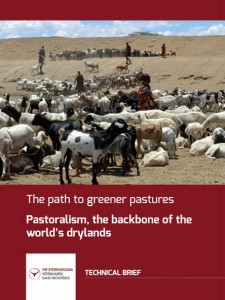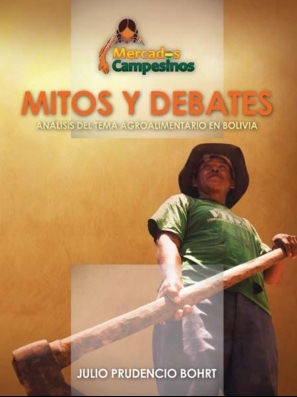QUIÉNES SOMOS
Somos una asociación formada por personas que creemos en la necesidad de cambiar el sistema agroalimentario actual, que oprime y expulsa a las comunidades rurales, y destruye el medio ambiente. Este cambio pasa por la consecución de la Soberanía Alimentaria.
VISIÓN: La consecución de una sociedad justa, equitativa y solidaria, a través del ejercicio de una solidaridad responsable y respetuosa.
MISIÓN: Promover un modelo de desarrollo rural justo en favor de la Soberanía Alimentaria y generar en la sociedad una conciencia solidaria como principio hacia la transformación social.
VALORES: Ecologista / Aconfesional / Independiente / Apartidaria /Feminista
Members:
Resources
Displaying 1 - 4 of 4The path to greener pastures. Pastoralism, the backbone of the world’s drylands
Pastoralism is a livelihood system based on free-grazing animals that is used by communities in marginal areas. The land may be marginal for various reasons, including poor water supply or soil quality, extreme tem - peratures, steep slopes and remote - ness. Pastoralism enables communi - ties to manage their resources in a sustainable, independent and flexible way. It is marked by rights to com - mon resources, customary values and ecosystem services. Some pastoralists combine livstockkeeping with growing crops for food or forage.
Mitos y debates. Análisis del tema agroalimentario en Bolivia
El autor aborda el derecho a la alimentación, la producción de agua y semillas, adaptación del cambio climático, las inversiones en tierras, la Cumbre Mundial de los Alimentos, entre algunos tópicos, en un contexto de tensiones y procurando un análisis que teje lo internacional con lo local.
Take anything, leave our land
The Karamoja region in Northeastern Uganda, covering an area of 27,200 square kilometers, is inhabited by around 1.2 million people who live in seven districts; Moroto, Nakapiripirit, Napak, Amudat, Abim, Kotido and Kaabong. Its residents are mainly Ngakarimojong speaking peoples, but the area is also home to the Ethur, Labwor, Pokot, and indigenous minorities such as the Tepes and the Ik.
RECIPROCAL RESOURCE AGREEMENT DOCUMENTATION
Marsabit County is situated in the northern part of Kenya, bordering the Republic of Ethiopia to the north and Lake Turkana to the west. With approximately 66,000 square kilometres of which 4,956 km2 are covered by Lake Turkana, the foremost part of Marsabit County is an extensive plain which lies between 300m and 900m above sea level. It is characterized by a population density averaging 2 persons per km2 and a distribution varying between 1 person up to 22 persons per km2, depending on the scarcity of water as well as the amount of permanent and semi-permanent settlements.





